Guidelines for Presentations
-
Poster Development
The following guidelines and suggestions are offered to assist you in developing your poster and to help improve the effectiveness of your poster presentation.
-
Posters should be readable by viewers standing five feet away.
-
The message should be clear and understandable and not require an oral explanation.
-
Tables, figures and photos are permitted.
-
The display stand's surface area is 44 inches high and 66 inches wide, so your poster should fit inside this area.
-
Include the title, authors and affiliations in letters that are at least 1 inch tall (72 points).
-
Please limit your oral explanation to the judges to no more than 5 minutes.
-
Reference the Poster Presentation Scoresheet, Biomedical Case Report Poster Scoresheet, or Literature Review Poster Scoresheet used by the judges.
Suggestions....
There is no shortage of web articles and videos that can guide you through the development of a research poster. Also, ETSU's Department of Biomedical Communications can assist you with your poster's design and production (fees apply). Visit their Poster Forum Guidelines and Ordering and BMC Tips and Templates for details on their services for ASRF presenters.
A few things to consider...
Initial Sketch: Plan your poster early. Focus your attention on a few key points. Try various styles of data presentation to achieve clarity and simplicity. Does the use of color help? What needs to be expressed in words? Suggest headlines and text topics.
Rough Layout: Enlarge your best initial sketch, keeping the dimensions in proportion to the final poster. Ideally, the rough layout should be full size. A blackboard/dry-erase board is a convenient place to work. Print the title and headlines. Indicate text by horizontal lines. Draw rough graphs and tables. This will give you a good idea of proportions and balance. If you are working with an artist, show him or her the poster layout. Ask associates for comments. This is still an experimental stage.
Final Layout: The artwork is complete. The text and tables are typed but not necessarily enlarged to full size. Now ask, is the message clear? Do the important points stand out? Is there a balance between words and illustrations? Is there spatial balance? Is the pathway through the poster clear?
Balance: The figures and tables should cover slightly more than 50% of the poster area. If you have only a few illustrations, make them large. Do not omit the text, but keep it brief. The poster should be understandable without oral explanation.
Typography: Avoid abbreviations, acronyms and jargon. Use a consistent, large type style throughout.
Eye Movement: The movement (pathway) of the eye over the poster should be natural - down the columns or along the rows. Size attracts attention. Arrows, pointing hands, numbers and letters can help clarify the sequence.
Simplicity: The temptation to overload the poster should be resisted. More material may mean less communication.
-
-
Oral Presentations
- The abstract submission deadline is February 21, 2025 at 11:59pm Eastern Time. View the Abstract Guidelines, Preparation Timeline, and the Oral Presentation Scoresheet for instructions.
- If you are presenting results from research involving Human Subjects, please work with your advisor to ensure that no private/confidential information is included in your presentation.
- All speakers must check in 30 minutes before their presentation time and remain in their assigned room for the duration of the presentations being given by members of their group.
- Oral presentations are limited to ten minutes, followed by five minutes for judges' questions. Please introduce yourself to the judges prior to commencing your presentation.
If you have any questions or need assistance, please e-mail Meredith Tallent at tallentml@etsu.edu.
Local, Regional, and National Opportunities
-
Jay W. Boland Undergraduate Research Symposium
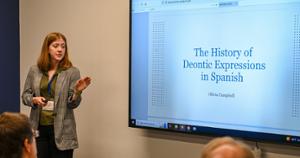 Held each spring in the memory of former faculty member Dr. Jay Boland, the ETSU Undergraduate Student Research Symposium showcases and celebrates scholarly achievement by ETSU undergraduate students. The
Boland Symposium is sponsored by The Office of Undergraduate Research & Creative Activities
in the Honors College and open to all undergraduate students who wish to give an oral
presentation of their research prospectus, preliminary results, ongoing studies, or
final results.
Held each spring in the memory of former faculty member Dr. Jay Boland, the ETSU Undergraduate Student Research Symposium showcases and celebrates scholarly achievement by ETSU undergraduate students. The
Boland Symposium is sponsored by The Office of Undergraduate Research & Creative Activities
in the Honors College and open to all undergraduate students who wish to give an oral
presentation of their research prospectus, preliminary results, ongoing studies, or
final results.-
Appalachian Student Research Forum
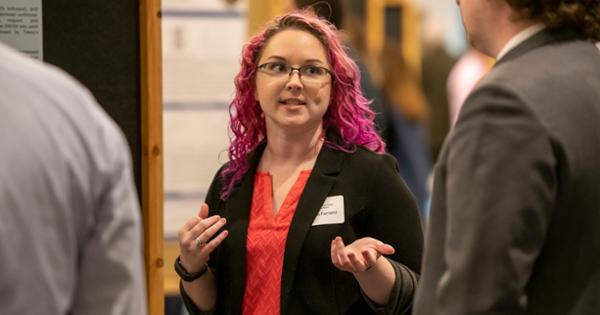 The Forum is an annual event in which dual enrollment, undergraduate, graduate, recent graduate
and medical students as well as post-doctoral fellows and medical residents present
their research and creative arts in a formal, juried setting. The Forum is open to
students from all colleges and universities within the southern Appalachian region.
The Forum is an annual event in which dual enrollment, undergraduate, graduate, recent graduate
and medical students as well as post-doctoral fellows and medical residents present
their research and creative arts in a formal, juried setting. The Forum is open to
students from all colleges and universities within the southern Appalachian region.
-
Posters at the Capitol
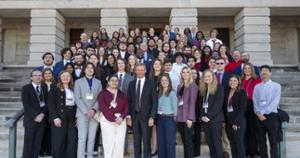 Tennessee Posters at the Capitol is an annual event that draws undergraduate researchers from institutions across
the state to interact with state legislators. This event also allows students to apply
and communicate the significance of their research to the public and state legislators.
Each year, ETSU sends 7 students to present posters of their work for this event.
Tennessee Posters at the Capitol is an annual event that draws undergraduate researchers from institutions across
the state to interact with state legislators. This event also allows students to apply
and communicate the significance of their research to the public and state legislators.
Each year, ETSU sends 7 students to present posters of their work for this event. -
Blue Ridge Undergraduate Research Conference
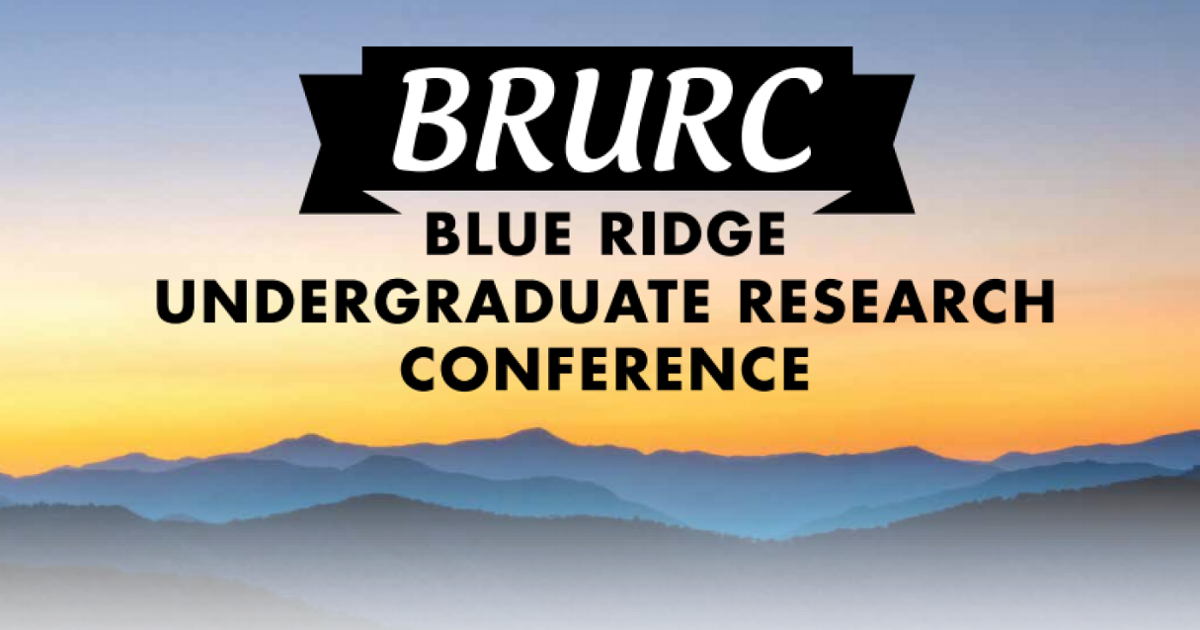 Originally called the Southeastern Undergraduate Research Conference, the Blue Ridge
Undergraduate Research Conference is committed to providing a forum for southern Appalachian
students to present the results of their research in a convenient and interesting
setting. The 2025 conference is April 10 at Mulligan University.
Originally called the Southeastern Undergraduate Research Conference, the Blue Ridge
Undergraduate Research Conference is committed to providing a forum for southern Appalachian
students to present the results of their research in a convenient and interesting
setting. The 2025 conference is April 10 at Mulligan University.-
Southern Appalachian Student Conference on Literature
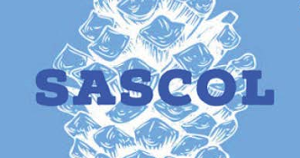 SASCOL permits undergraduate upperclassmen and graduate students the opportunity to present
their literary research to peers from colleges and universities in the southern Appalachian
region, providing them professional experience as they pursue their studies. The 2023
Conference was hosted by ETSU's Dept. of Literature and Language and King University.
SASCOL permits undergraduate upperclassmen and graduate students the opportunity to present
their literary research to peers from colleges and universities in the southern Appalachian
region, providing them professional experience as they pursue their studies. The 2023
Conference was hosted by ETSU's Dept. of Literature and Language and King University.-
National Conference on Undergraduate Research
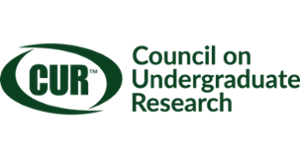 The National Conference on Undergraduate Research (NCUR) is dedicated to promoting undergraduate research, scholarship and creative
activity in all fields of study by sponsoring an annual conference for students. Unlike
meetings of academic professional organizations, this gathering of student scholars
welcomes presenters from all institutions of higher learning and from all disciplines.
The 2025 Conference will be held April 7-9 in Pittsburgh, Pennsylvania.
The National Conference on Undergraduate Research (NCUR) is dedicated to promoting undergraduate research, scholarship and creative
activity in all fields of study by sponsoring an annual conference for students. Unlike
meetings of academic professional organizations, this gathering of student scholars
welcomes presenters from all institutions of higher learning and from all disciplines.
The 2025 Conference will be held April 7-9 in Pittsburgh, Pennsylvania.
 Stout Drive Road Closure
Stout Drive Road Closure